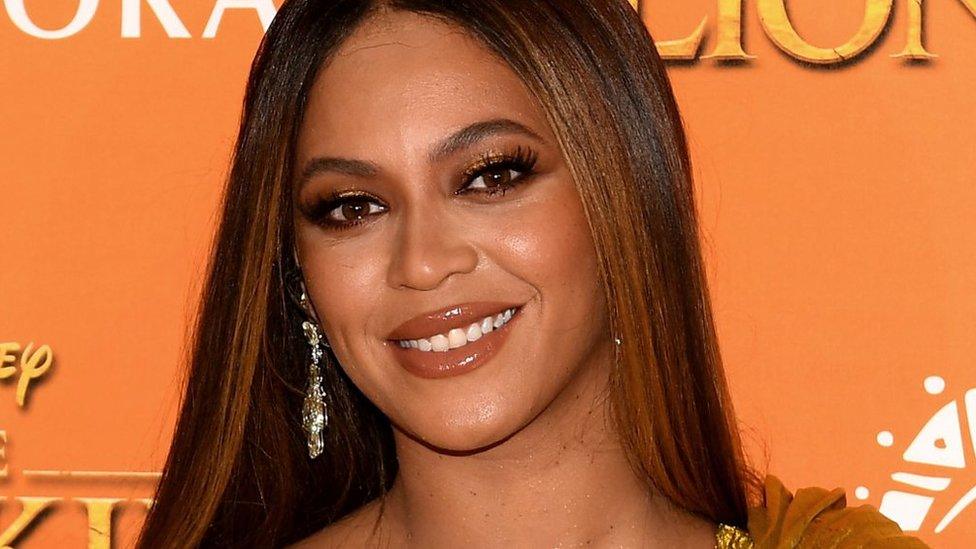The Lion King musical: Behind the scenes of the theatre show
- Published
- comments
Behind the scenes of The Lion King musical
One young actor playing the role of Simba in The Lion King has told Newsround that he got the job after he was spotted singing in church.
Daniel who is ten, had never performed on stage in a big theatre show before, and says: "I've not had a lot of experience with acting, I got seen in church singing and then one of the teachers asked me to come and do auditions."
After being successful and securing the role of Simba, Daniel said it felt "really good - I felt so proud of myself".
Daniel was speaking to Newsround along with his co-star, ten-year-old Harmony, who plays the young Nala in the show.
What story is The Lion King based on?
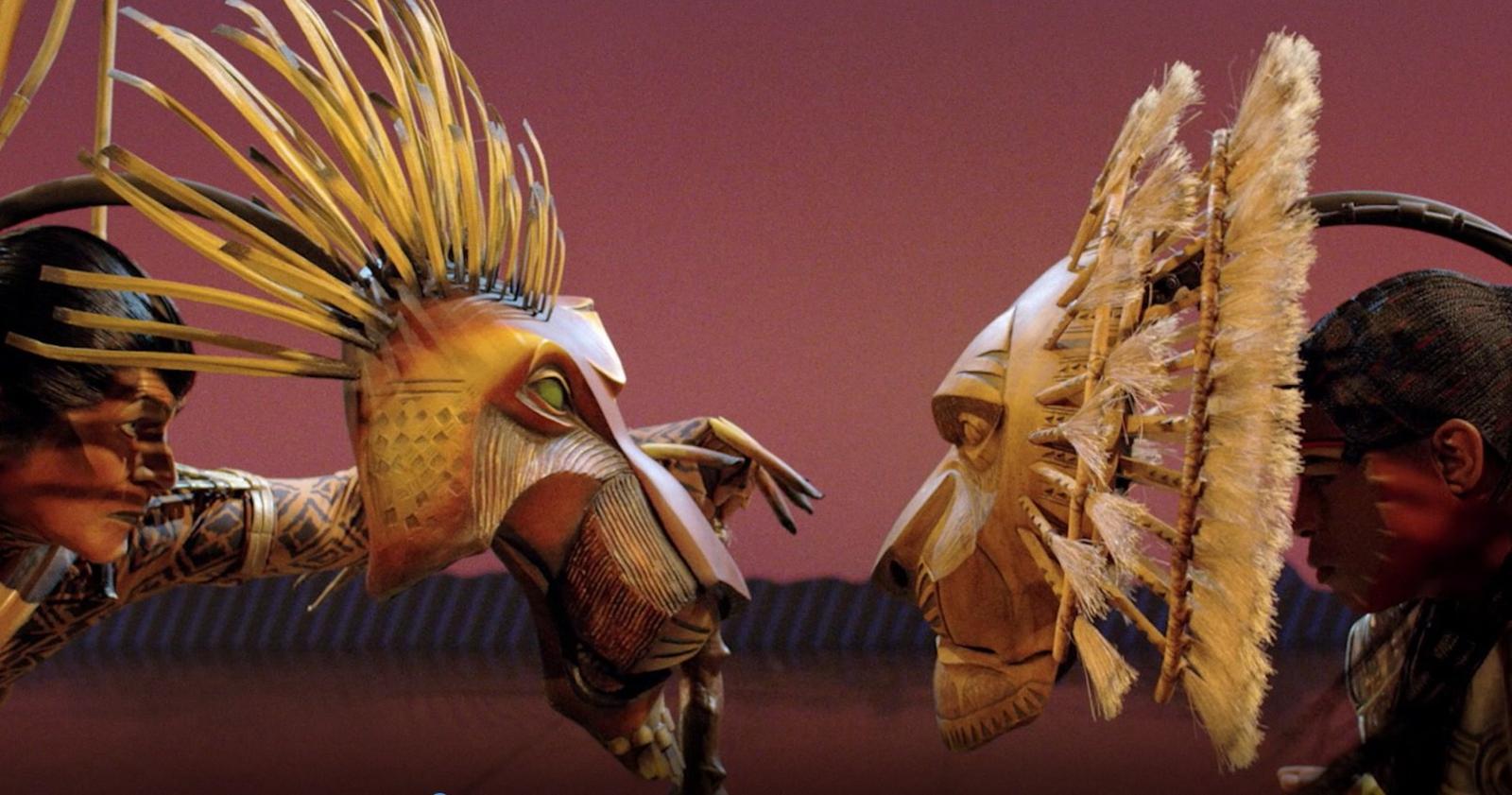
The story of The Lion King is inspired by William Shakespeare's play Hamlet.
It's a tale of a King, his son and evil brother who steals the kingdom, before the son returns to reclaim the throne.
Disney's The Lion King was first released in cinemas as a cartoon animation in 1994.
The musical theatre show began in 1997 and has since been seen by more than 100 million people, going to theatres all over the world.
A remake of the original film came out in 2019, this time as a more realistic computer animation.
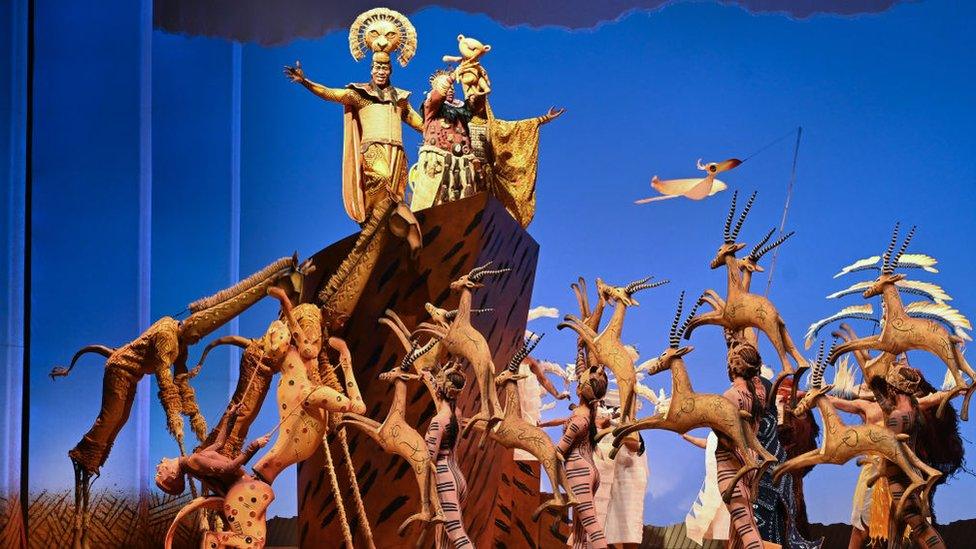
Advice for performing on stage
Speaking to Newsround, Harmony who plays Nala explained what it was like walking out on stage as such a famous character, in such an iconic show for the first time.
"Very nervous! You could see all the people and all their faces," she says, adding that you just have to "be in the moment and stay calm".
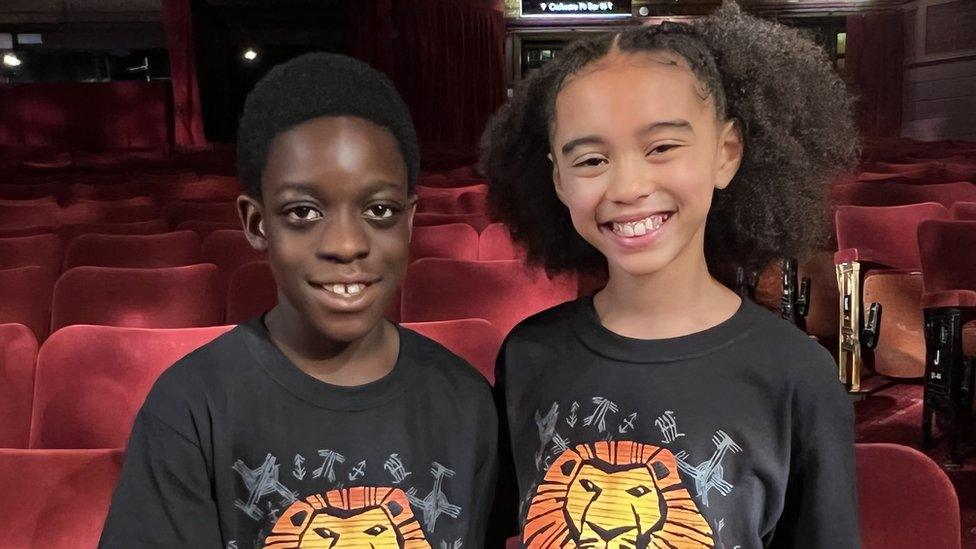
Daniel and Harmony are just one of eight pairs of children playing the part of Simba and Nala in The Lion King musical
For children involved in a professional theatre show, there are laws about how often they are allowed to perform, that means there are eight pairs of Simbas and Nalas in one Lion King production, taking turns to perform on different nights.
"So we all got paired in a team and we all are working with each other in rehearsals," says Harmony, explaining that she always works with Daniel but can also be on standby and rehearses with another Simba actor in case a different Nala isn't able to perform.
Omar Castillero, who is directing the show, says working with so many children on different nights of the week can be challenging: "I need to understand them, their personalities and allow them to be themselves, to be unique. It takes time."
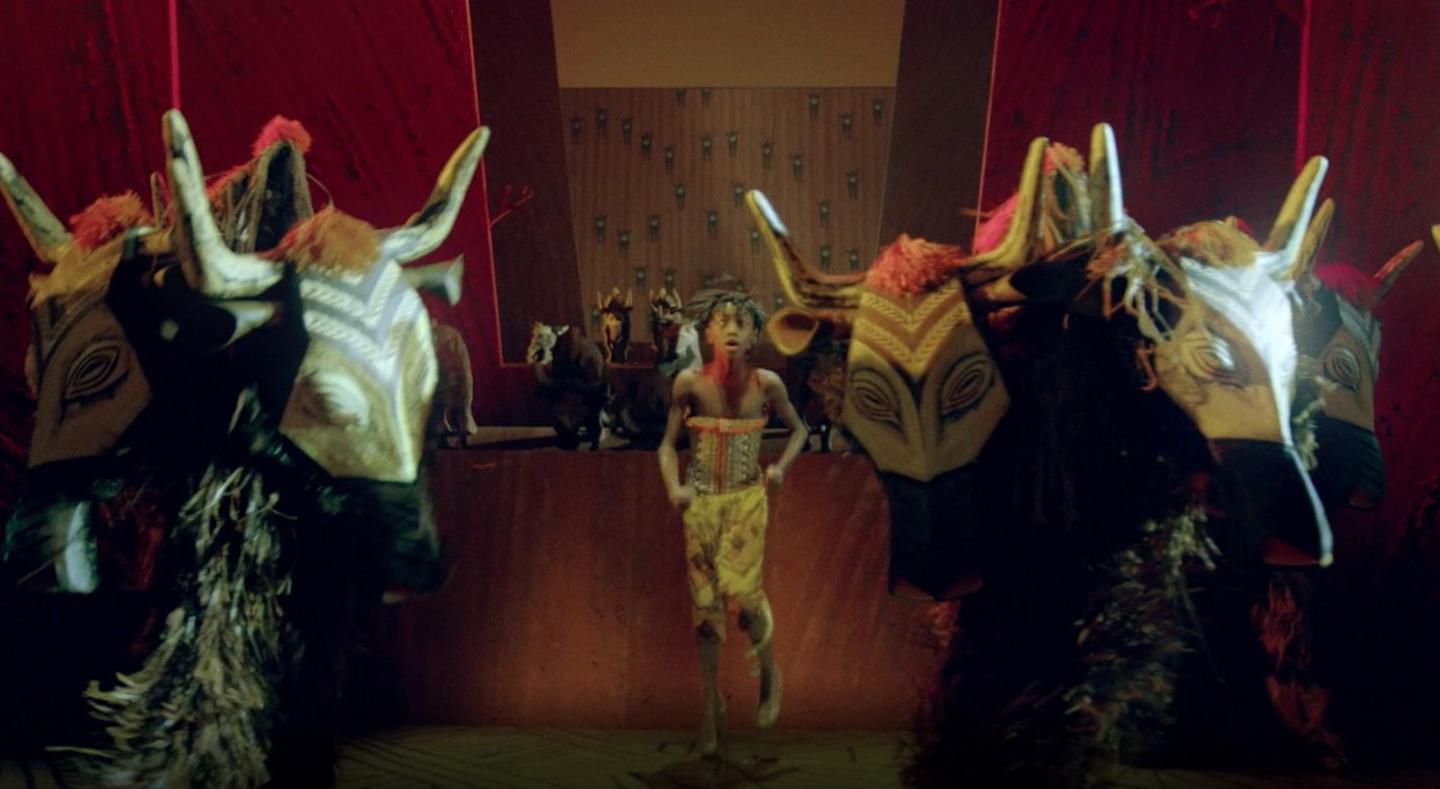
As for Daniel, he says the hardest part of being in his first professional stage show, is the moment in The Lion King when a big stampede happens.
On stage, the scene involves Simba moving from place-to-place, running on the spot and dodging other performers with giant antelope masks.
"Running, counting in your head and looking on the floor for all the marks - knowing where you need to be at all times," Daniel explains.
Asked what advice he would give to other children performing or wanting to perform, he adds: "If you don't understand something, say that you don't understand it.
"If they say you're going to do this dance and you don't know how to do it, ask them, say 'I don't know how to do it' because then it will be even better on stage."
It takes about 150 people to put on the show each night - 50 on stage, and 100 backstage.
There are 232 puppets in the show.
There are 25 species of animals, birds, fish and insects represented in the show including 27 kite birds.
The largest and longest animal in the show is the Elephant. At 13 feet long and 9 feet wide, the puppet needs four actors to move.
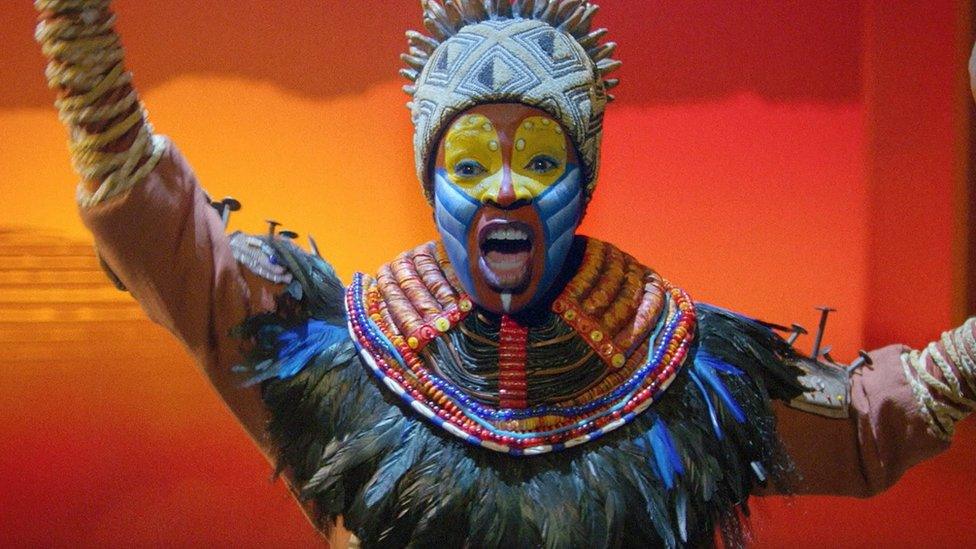
What do the African words in The Lion King mean?
Five African languages are spoken or sung in the show, they are: Sotho, Swahili, Zulu, Tswana and Xhosa.
Many of the character's names are from the Swahili language, for example Simba is simply the Swahili word for lion and Nala is the word for gift.
"We are always very careful that those languages are respected and we need to pronounce them properly because it means a lot," says director, Omar.
Are you a fan of The Lion King? Have you seen the theatre show? Let us know in the comments!
- Published22 July 2019

- Published15 July 2019
